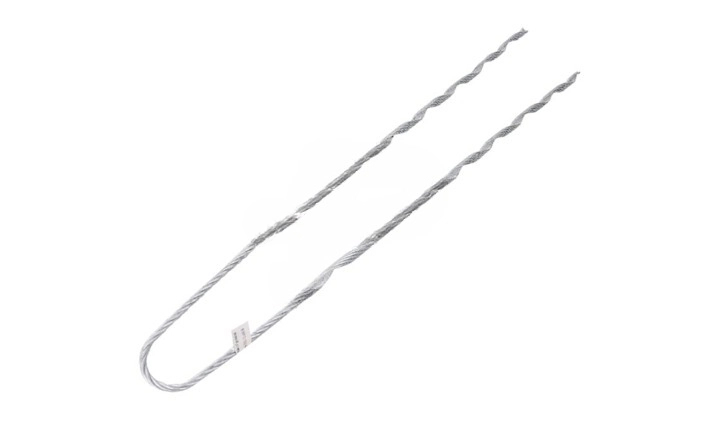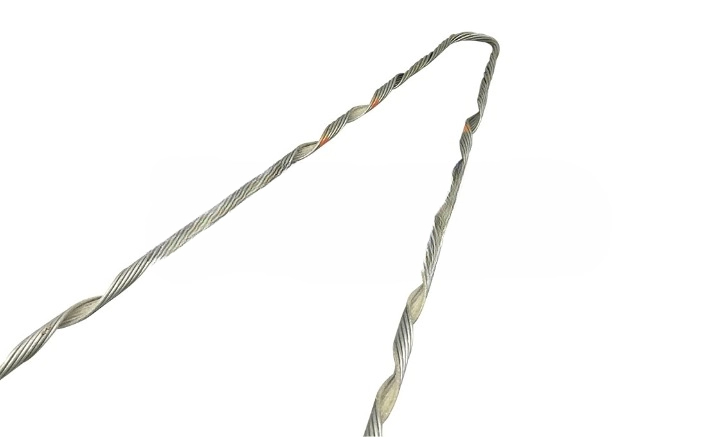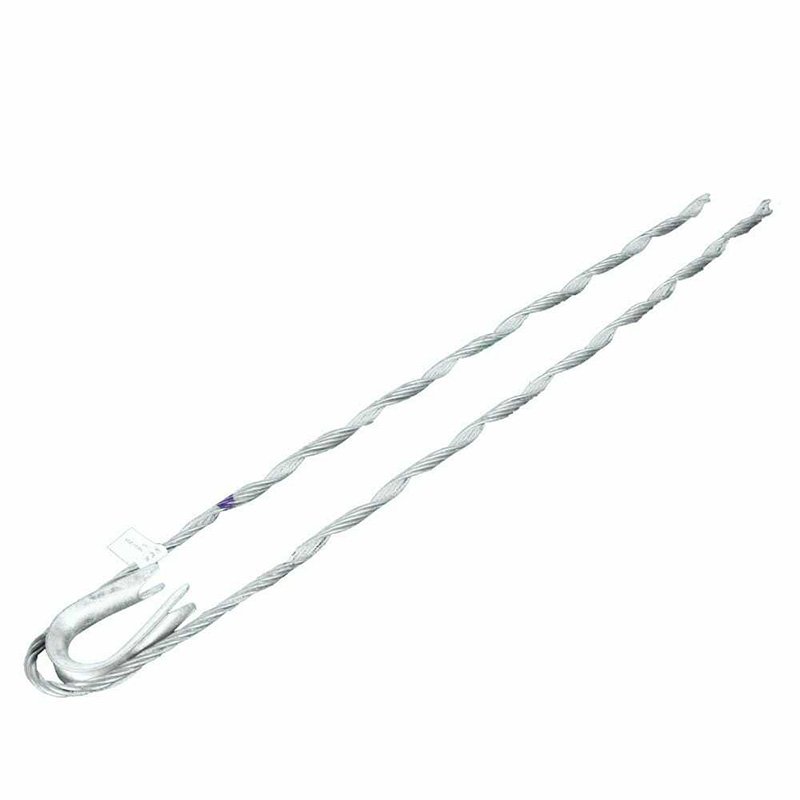
A big grip dead end is a specialized device found in telecommunications and transmission lines. It helps to anchor and secure overhead cables. It comprises of a broad, robust grasp intended to hold the cable in place. Big grip dead end also helps to keep the cables from sagging or falling loose. A big grip dead end contributes to the stability and dependability of overhead cable networks. This helps to maintain continuous communication and transmission of data or electricity. Big grip dead ends serve to anchor cables at line termination points in ADSS cables. The big grip ensures a strong and dependable hold on the ADSs cables even in adverse situations. They are also used to anchor the OPGW wires for support structures.
Operational characteristics of a big grip dead end
The big grip dead end has several qualities that show its greatest performance. They help to ensure the stability, reliability, and safety of cable installations. The following are the big grip dead end performance features.

- Strength and load capacity – the big grip dead ends have designs to endure severe tensile loads and mechanical strains. They should be able to secure overhead cables in a variety of circumstances. This includes severe winds, ice accumulation, and dynamic loads.
- Secure grasp – the dead end’s grip mechanism should offer a tight and secure hold on the cable. This helps to evenly disperse the load over the cable’s length. This is to avoid localized stress concentrations.
- Simple installations – the dead end should be simple to install and adjust. This ensures efficient installation processes and allows for tension adjustments.
- Environmental factors resistance – dead ends should be resistant to environmental conditions. This includes UV exposure, temperature fluctuations, and dampness.
- Durability – they are from materials that resist corrosion and disintegration. These materials include galvanized steel and aluminium.
- Versatility – big grip dead ends should have designs to accommodate varied cable diameters and types. This makes installation more flexible and compatible with a variety of wire systems.
- Standard compliance – this entails ensuring that the design and performance of big grip dead ends adhere to relevant industry standards. This is to ensure interoperability with current infrastructure and adherence to safety requirements.
Materials used in the fabrication of big grip dead ends
A variety of criteria influence the selection of big grip dead end materials. This includes the unique application, environmental circumstances, performance requirements, and cost concerns. Also, choosing the proper materials helps to ensure that they have the required strength, durability, and reliability. The following are the most frequent materials for big grip dead ends.

- Steel – high-strength steel serves its purpose in the fabrication of big grip dead ends. This is due to its mechanical characteristics and durability. Dead ends from steel can sustain huge loads and are corrosion resistant.
- Aluminum – this is a lightweight yet robust material. They also offer good corrosion resistance. Aluminum big grip dead ends are useful in applications where weight reduction is a necessity.
- Composite materials – these include fiberglass-reinforced plastics. They provide strength-to-weight ratios, corrosion resistance, and electrical insulation.
- Aluminum alloy – some of the big grip dead ends are from aluminum alloys, which give strength and lightweight qualities. They provide a balance of strength, corrosion resistance, and weight savings.
- Bronze – these dead ends are suitable for applications requiring corrosion resistance and mechanical qualities. They work in aquatic environments and areas exposed to seawater.
Technical specifications for big grip dead ends
Technical specs might provide useful information about the big grip dead ends. The parameters change depending on a variety of factors. This includes the individual application, cable type, load requirements, and manufacturer preferences. It is also advisable to refer to the manufacturer’s specifications for specific product information. The following technical standards apply to big grip dead ends.
| MPN: | BG-2112 |
| Cable Diameter | 3/4″ |
| Type | Big-Grips |
| Color | Orange |
| Breaking Strength (lbs) | 58,300 |
| Overall Length | 76″ |
| Box Quantity | 5 |
| Approx. Weight (lbs) | 11.2 |
- Size and compatibility – big grip dead ends are available in a variety of sizes to accommodate different cable diameters and types. The requirements should include appropriate cable sizes and kinds to provide a correct fit and grip.
- Load capacity– they should have designs to handle certain loads or pressures applied to the cable. The requirements should state the greatest allowed tensile load that dead ends can withstand without failing.
- Mechanical qualities – specifications should contain information on the mechanical properties of dead ends. This includes tensile strength, yield strength, and elongation.
- Compliance – big grip dead ends should adhere to relevant industry norms and laws. This includes standards developed by ANSI, IEC, or ISO.
- Material – specifications should define the material utilized to manufacture the dead ends. It should also provide information about corrosion-resistant coatings and treatments.
- Grip length – this refers to the part of the dead end that clamps onto the cable. Technical requirements should include the grip length. This ensures appropriate interaction with the cable.
- Corrosion resistance – the requirements may specify the level of corrosion resistance supplied. Specifications may include information about coatings, surface treatments, or material composition.
- Installation instructions – they should contain guidance for installing the dead end. This may include torque requirements for tightening bolts as well as tension adjustment techniques.
Industry advances and adjustments for dead ends.
Continuous development of big grip dead ends focuses on performance, durability, and ease of installation. These innovations can help to improve the dependability and efficiency of their infrastructure. This happens while adjusting to changing technical and regulatory needs. The following are some potential upgrades and updates to big grip dead ends.

- Improved materials – manufacturers may create new alloys or composite materials. This is owing to their higher strength-to-weight ratios.
- Smart technologies – the incorporation of smart technologies could allow for real-time monitoring. These technologies include sensors and monitoring systems. The data could ease maintenance and early detection of potential problems.
- Integration with automation and robotics – advancements in automation and robots may simplify production operations. This may improve quality control for big grip dead ends.
- Research and development – these initiatives may investigate new techniques for enhancing performance and dependability. Industry players, academic institutions, and research groups could work together to detect new difficulties.
- Enhanced grip designs – advancements in grip design may improve load distribution along the cable. This could help to reduce stress levels and potential damage. It may also increase the performance and dependability of big grip dead ends.
- Modular and adjustable designs – these may make it easy to install and adjust large grip dead ends. The versatility could help to speed installation operations and handle different cable diameters.
- Standardization and interoperability – industry organizations may collaborate to produce standardized requirements. This could help to enhance interoperability across products from various manufacturers.
Big grip dead ends for ADSS and OPGW wires
Big grip dead ends play an important function in fastening wires to support structures like poles. The dead ends function to meet the features and standards of ADSS and OPGW cables. They help to assure the stability, dependability, and lifespan of overhead cable networks. Additionally, it is advisable to check with industry professionals for advice on the best dead ends to use in ADSS/OPGW cables. Consider the following when using big grip dead ends with ADSs and OPGW cables.

- Compatibility – big grip dead ends must match the sizes and construction of ADSs and OPGW cables. They should be able to give a firm grip without injuring the cable’s optical fibers.
- Corrosion resistance – ADSS and OPGW cables should be from materials that are corrosion resistant. This is to assure long-term dependability and performance.
- Insulation – dead ends for OPGW cables should be electrically insulated to prevent interference with optical signal transmission.
- Load capacity – dead ends for ADSS and OPGW cables should have ratings to resist expected loads and tension.
- Grip design – the grip mechanism should be able to distribute clamping force along the whole length of the cable. This is to reduce stress concentrations and potential damage to the cables.
- Ease of installation – big grip dead ends should have designs for easy installation and adjustment. This enables the easy deployment and maintenance of ADSS and OPGW cable systems.
Frequently asked questions
Big grip dead ends help to improve the stability, dependability, and lifespan of overhead cable networks. This is by securely anchoring cables, preventing sagging or movement, and assuring continuous communication and power transfer.
Steel, aluminum, aluminum alloys, and fiberglass-reinforced polymers (FRP) are examples of common materials. These materials combine the strength, durability, and corrosion resistance required for outdoor installations.